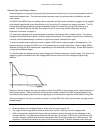
Tsunami MP.11 Antenna Installation
Copyright © 2006 Proxim Wireless Corporation. All rights reserved. 19
3. To protect the weatherproofing stretch tape from the effects of Ultra-Violet (UV) radiation (for example, from
direct sunlight), you should protect the joint with two half-overlapped layers of any vinyl plastic electrical tape.
Alternatively, you can apply silicone sealer to protect the weatherproofing tape from sunlight, rain and other
weather conditions.
Grounding the Antenna
Direct grounding of the antenna mast, radio hardware and surge arrestor is extremely important.
Note: A safety grounding system is necessary to protect your radio hardware from lightning strikes and the
build-up of static electricity.
WARNING!
The antenna mast, radio hardware, and surge arrestor must be connected to the same ground, using an
equi-potential bonding conductor.
A good electrical connection should be made to one or more ground rods, using at least a 10AWG
ground wire and non-corrosive hardware.
The grounding system must comply with the National Electrical Code and safety standards that apply in
your country. Always check with a qualified electrician if you are in doubt whether your radio hardware
installation is properly grounded.
Aligning the Antenna
For optimal performance of your wireless link, make sure the antennas are properly aligned (facing one another
eye-to-eye). Antenna alignment is a process to physically align the antennas of both units to have the best
possible radio link established between them. The antenna alignment process usually is performed during
installation and after major repairs.
To align the antennas:
• Use a pair of binoculars or a map of the area and a compass to point the antennas to one another.
• Use the Antenna Alignment Display feature (AAD) to display a measurement of signal quality at the CLI and
serial ports.
• You also can use the Link Test option of the management tools that come with the MP.11a and the 5054-R
to analyze the radio link quality.


















